 Infected for Science
Sydney Halpern
Trygve Faste
Infected for Science
Sydney Halpern
Trygve Faste
While World War II was still raging, David Miller and a group of conscientious objectors volunteered for US government–sponsored experiments that deliberately exposed them to hepatitis. As study subjects, they endured invasive procedures, the specter of debilitating illness, and a growing awareness of the human costs of dangerous medical research.
Based on Miller’s vivid cartoons and other historical documents, Infected for Science brings this hidden history to life with artwork by Trygve Faste and a deeply researched narrative by Sydney Halpern. Together they capture the toll of the experiments and the men’s decision to voice principled objections to medical studies with people who had not willingly consented.
With bold visuals and gripping storytelling, Infected for Science uncovers a forgotten chapter in American medicine and raises questions about research ethics that resonate today. This powerful graphic narrative explores patriotism, protest, and the moral courage of those who chose to put themselves in harm’s way for what they believe is right.
 Gay Mormon Dad
Chad Anderson
Remy Burke
Gay Mormon Dad
Chad Anderson
Remy Burke
All his life, Chad Anderson was told he was broken. He believed with all his heart that being a good Mormon would make him straight, because that is what was promised. Chad followed the prescribed road map: mission, marriage, and children. But it didn’t make him happy, and it didn’t make him straight. For Chad, coming out meant losing everything and starting again.
Gay Mormon Dad is the story of one man learning to love himself in a complicated world. This inspiring autobiography unfolds in two parts, “Then” and “Now,” woven together in a way that will hit you right in the heart. Vibrantly illustrated by artist Remy Burke, this moving graphic novel sheds light on the dangers of spiritual abuse and illuminates the path to healing.
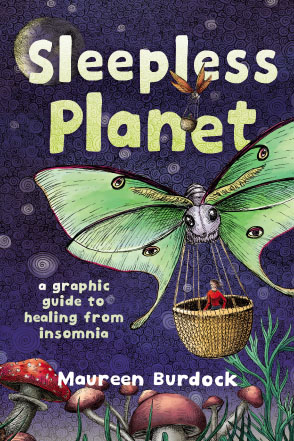 Sleepless Planet
A Graphic Guide to Healing from Insomnia
Maureen Burdock
Sleepless Planet
A Graphic Guide to Healing from Insomnia
Maureen Burdock
Insomnia is a sleep disorder that affects roughly one in four people in the industrialized world. Typical treatments are often ineffective and have undesirable side effects. For those of us yearning for a restful night’s sleep in a world that never stops turning, it’s hard to know how to find relief.
Part graphic nonfiction and part comics diary, this guide offers an insightful look at the science of sleep and the cultural forces contributing to the modern insomnia epidemic. In it, Maureen Burdock shares a deeply personal journey of navigating sleep disturbance from childhood through perimenopause. As she grapples with the physical, mental, and emotional toll of sleepless nights, Burdock explores a range of popular treatments—consulting sleep specialists and testing THC sleep aids, mouth taping, and cognitive behavioral therapy. Along the way, Burdock reveals how rewilding her life—through diet, meditation, education, and mindfulness—helped her find balance and ultimately reclaim her sleep.
With humor and vulnerability, Sleepless Planet invites readers to slow down, reconnect with themselves, and seek their own path to healing. Whether you’re a chronic insomniac or simply seeking better sleep, this book is a visually rich and empowering companion on the journey toward rest.
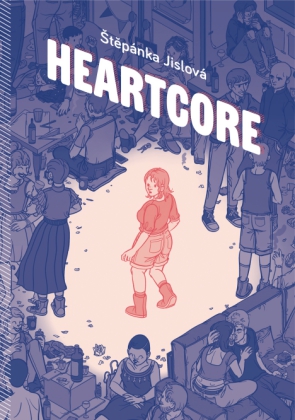 Heartcore
Štěpánka Jislová
Heartcore
Štěpánka Jislová
What is at the core of romantic attachment? Does our upbringing play a part, or is falling in love a magical, uncontrollable process? Are we doomed to repeat the same mistakes over and over, or can we break unhealthy cycles and learn new ways to love?
These are the questions asked in Heartcore, an award-winning graphic memoir from comics creator Štěpánka Jislová. In this empowering story of self-discovery, the author reflects on her troubled experiences in dating and love and finally seeks to understand the reasons behind her many toxic relationships. She explores topics such as normative gender roles, online dating and casual sex, alcohol abuse, sexual violence, and the psychology behind interpersonal attachment, all in an engaging graphic-novel format. By confronting her unhealthy behaviors and seeking help to come to terms with her trauma, the author provides an inspiring example of how people can change for the better.
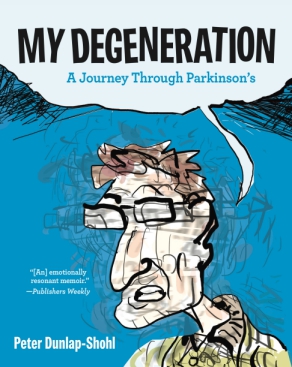 My Degeneration
A Journey Through Parkinson’s
Peter Dunlap-Shohl
My Degeneration
A Journey Through Parkinson’s
Peter Dunlap-Shohl
At the age of forty-three, former Anchorage Daily News staff cartoonist Peter Dunlap-Shohl was diagnosed with Parkinson’s disease, a disorder that, among other things, can rob a person of their ability to speak or write and degrades their ability to deal with complexity. In My Degeneration, Dunlap-Shohl recounts his attempt to come to grips with the “malicious whimsy” of this chronic, progressive, and disabling disorder with his characteristic humor and passion.
This graphic novel tracks the author’s journey through depression, juggling medications and weathering their side effects, the impact of the diagnosis on his personal relationships, and the raft of mental and physical changes wrought by the disease.
But My Degeneration is more than a memoir—Dunlap-Shohl gives the person newly diagnosed with Parkinson’s disease the information necessary to cope with it on a day-to-day basis. He chronicles the changes that life with the disorder can bring to the way one sees the world and the way one is seen by the wider community. Above all, Dunlap-Shohl imparts a realistic basis for hope—hope not only to carry on but to enjoy a decent quality of life.
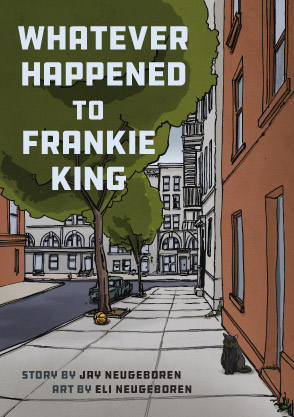 Whatever Happened to Frankie King
Jay Neugeboren
Eli Neugeboren
Whatever Happened to Frankie King
Jay Neugeboren
Eli Neugeboren
Frankie King was a precocious student and a promising basketball player at Brooklyn’s James Madison High School in the early 1950s. Sportswriters were comparing Frankie to the greatest college and professional players of all time, and he was recruited as a starting guard at the University of North Carolina. But Frankie dropped out before playing a single game.
This graphic novel follows King’s enigmatic life from its auspicious start in the limelight to his very reclusive existence in New York City, where he authored more than forty novels, including a popular series of cozy cat mysteries written under the pseudonym Lydia Adamson. Whatever Happened to Frankie King is the story of a unique and sometimes troubled life as well as a meditation on dreams realized, lost, and abandoned.
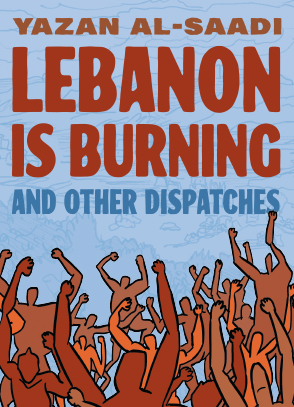 Lebanon Is Burning and Other Dispatches
Yazan Al-Saadi
Tracy Chahwan
Ganzeer
Ghadi Ghosn
Omar Khouri
Sirène Moukheiber
Hicham Rahma
Enas Satir
Lebanon Is Burning and Other Dispatches
Yazan Al-Saadi
Tracy Chahwan
Ganzeer
Ghadi Ghosn
Omar Khouri
Sirène Moukheiber
Hicham Rahma
Enas Satir
Voices from the Middle East on the fight for self-determination.
Much of the present discourse about the pro-democracy Arab uprisings of 2011 paints a bleak picture of their defeat. But the truth is more complicated, and moments of struggle and inspiration still recur despite the overwhelming odds against the movements’ success.
This collection of short comics documents the political and social unrest in the Middle East during the 2010s, in such places as Lebanon, Egypt, Yemen, Palestine, Sudan, and Bahrain. A collaboration between writer and journalist Yazan Al-Saadi and a lineup of stellar cartoonists from the region—Tracy Chahwan, Ganzeer, Ghadi Ghosn, Omar Khouri, Sirène Moukheiber, Hicham Rahma, and Enas Satir—this graphic reportage serves as a witness to an era of counterrevolutionary resurgence in which entrenched powers clashed with the people’s struggle for self-determination.
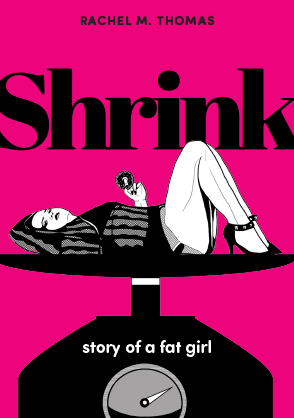 Shrink
Story of a Fat Girl
Rachel M. Thomas
Shrink
Story of a Fat Girl
Rachel M. Thomas
Derided by her high-school peers for being overweight, Rachel finally found a sense of purpose and belonging in a promising career as an EMT—that is, until her body got in the way.
Shrink is a work of graphic medicine that depicts the emotional and physical realities of inhabiting a large body in a world that is constantly warning about the medical and social dangers of being “too fat.” This smart and candid book challenges the idea that weight loss is the only path for a fat person and encourages the reader to question the prevailing cultural and medical discourse about fat bodies.
Seamlessly weaving the most current research on the fatness debate with her own experiences of living in a fat body, Thomas lays bare society’s obsession with size and advocates for each of us to push back on body weight bias and determine what’s right for our own health and well-being, both physical and mental.
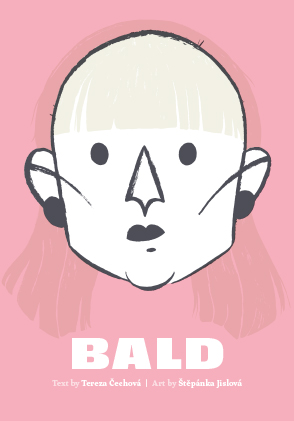 Bald
Tereza Čechová
Štěpánka Jislová
Bald
Tereza Čechová
Štěpánka Jislová
Tereza never thought she would go bald before her boyfriend did. She couldn’t imagine being unable to sweep her hair up in a ponytail or to style it in other ways. But when she lost all her hair in just a couple of months due to alopecia, her perspective on relationships and work—and above all, herself— radically changed.
Navigating the particular trauma of female hair loss, Tereza comes to terms with her new reality with humor and self-reflection in this prize-winning graphic memoir featuring eye-catching art by Štěpánka Jislová.
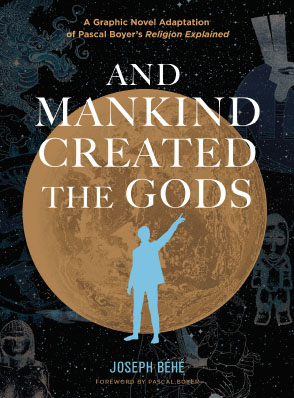 And Mankind Created the Gods
A Graphic Novel Adaptation of Pascal Boyer’s Religion Explained
Joseph Béhé
And Mankind Created the Gods
A Graphic Novel Adaptation of Pascal Boyer’s Religion Explained
Joseph Béhé
These are some of the most fundamental and enduring questions we have about the mysteries of religion, and they may well hold the key to humankind’s future on this earth.
In this adaptation of Pascal Boyer’s classic work exploring these concepts, Religion Explained, artist Joseph Béhé harnesses the power of comics to provide clear answers to the basic questions about why religion exists and why people believe.
A distinguished scholar, Boyer drew from research in cognitive science, anthropology, psychology, and evolutionary biology to explore why religion exists and why the strength of human beliefs can drive us to be selfless sometimes and, at other times, to be fanatical and intolerant. His erudite book is rich with insight into the endless jumble of ideas that inform religious beliefs and practices across cultures. With detailed, illustrative drawings and carefully adapted prose, Béhé’s graphic novel brings a new perspective to Boyer’s work.
An eminently accessible approach to the notoriously thorny topics of belief, cognition, humanity, and religion, And Mankind Created the Gods is a thoughtful, inspiring graphic novel that will further and broaden the conversation with which Boyer’s book engages.
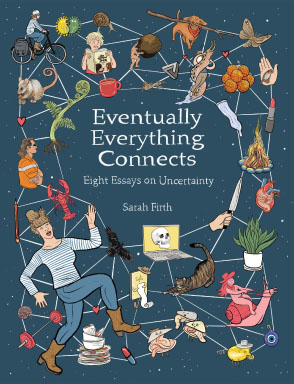 Eventually Everything Connects
Eight Essays on Uncertainty
Sarah Firth
Eventually Everything Connects
Eight Essays on Uncertainty
Sarah Firth
In her debut graphic novel, Sarah Firth ponders some of life’s deepest philosophical questions: Why are we here? How are we supposed to get along with one another? What on earth is that slug doing in my bathroom sink?
From daydreams and pop culture memes to the teachings of science, philosophy, and history, Firth weaves together a mix of great and silly ideas based on her own lived experience, all tossed together with unique energy, boundless curiosity and humor, and colorful, detailed, kinetic drawings. Through eight autobiographical visual essays, Firth explores how to live better in the modern world; ways to be more compassionate toward oneself, others, and the planet; and how everything does, eventually, connect.
Honest, profound, and profane, Eventually Everything Connects is a life-affirming book about the joys and pains of living in a hypercomplex and uncertain world.
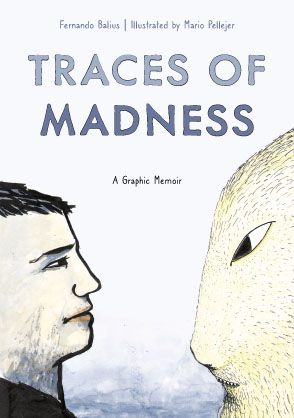 Traces of Madness
A Graphic Memoir
Fernando Balius
Mario Pellejer
Traces of Madness
A Graphic Memoir
Fernando Balius
Mario Pellejer
Fernando Balius was a perfectly ordinary, if misunderstood, young adult—until he started hearing voices.
In Traces of Madness, Fernando describes what it feels like, both mentally and physically, to lose your grip on reality. His life spins out of control when the voices he hears inside his head, depicted in the narrative as a monster, work to destroy his self-esteem and, worse, urge him to hurt himself. Various psychiatric diagnoses and prescribed medications do more harm than good, prompting Fernando to question whether stifling his voices is truly the right path for him. Throughout his experiences, he finds that his connections with others lend him the strength to survive.
Mario Pellejer’s moving illustrations bring Nando’s remarkable story to life. This raw and uniquely hopeful graphic memoir shows the power of community and understanding and encourages us all to push back in solidarity against the pervasive stigma surrounding mental illness.
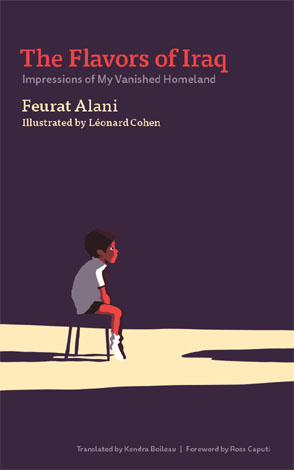 The Flavors of Iraq
Impressions of My Vanished Homeland
Feurat Alani
Léonard Cohen
The Flavors of Iraq
Impressions of My Vanished Homeland
Feurat Alani
Léonard Cohen
The Western media largely glossed over the immense human suffering that occurred in Iraq during the embargo of the 1990s and the Iraq War. With this innovative and award-winning graphic novel, French-Iraqi journalist Feurat Alani sets that record straight.
The Flavors of Iraq unfolds as a series of one thousand tweets. In them, Alani describes his experiences in Iraq from 1989, when he traveled from France to meet his extended family in Iraq for the first time, to 2011, when the last Americans pulled out of the country. Alani recounts the vivid impressions this place made on him as a child—its wondrous colors, tastes, and smells. And he documents the sounds, silences, and smells of a war in which hundreds of thousands of Iraqi civilians lost their lives.
Illustrated by the striking art of Léonard Cohen and with a foreword by Ross Caputi, a former US Marine who served in Iraq from 2003 to 2006, The Flavors of Iraq tells a poetic and powerful story of an oppressed population, an illegal war, and a country that no longer exists.
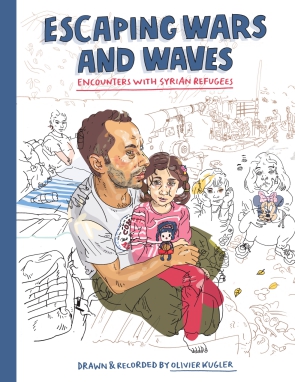 Escaping Wars and Waves
Encounters with Syrian Refugees
Olivier Kugler
Escaping Wars and Waves
Encounters with Syrian Refugees
Olivier Kugler
While on assignment between 2013 and 2017, often for Doctors Without Borders, Olivier Kugler interviewed and photographed Syrian refugees and their caregivers in camps, on the road, and in provisional housing in Iraqi Kurdistan, Greece, France, Switzerland, and England. Escaping Wars and Waves is the astonishing result of that record keeping—a graphic novel that brings to life the improvised living conditions of the refugees, along with the stories of how they survived.
Kugler captures the chaotic energy of the camps through movement-filled drawings that depict figures, locations, and seemingly random details that take on their own resonance. He gives precedence to the voices of the refugees by incorporating excerpts from his many interviews and portraits sketched from thousands of reference photos. What emerges is a complicated and intense narrative of loss, sadness, fear, and hope and an indelible impression of the refugees as individual humans with their own stories, rather than a faceless mass.
Escaping Wars and Waves is an unnervingly close and poignant look at the lives of those affected by the Syrian war and the volunteers who tend to them.
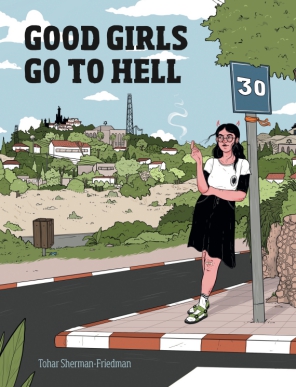 Good Girls Go to Hell
Tohar Sherman-Friedman
Good Girls Go to Hell
Tohar Sherman-Friedman
A coming-of-age graphic memoir set in the West Bank, Good Girls Go to Hell depicts the reality of growing up in a region split by religious tensions—and sometimes violent conflict.
From political protests to personal struggles with school, body image, and relationships with family and friends, Tohar Sherman-Friedman’s life is an inspiring story of conflicting convictions, rebellion, and personal growth. Tohar recounts her experience as the youngest of seven children in a conservative Jewish family, navigating a life buffeted by high expectations for school performance and religious adherence at home and tense conflict in the world outside. With utter sincerity and through detailed panel-style drawing, she relates what it’s like to be on a journey that ultimately takes her far from how she was taught to think and what she was expected to believe.
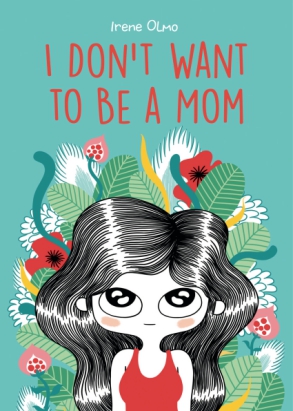 I Don’t Want to Be a Mom
Irene Olmo
I Don’t Want to Be a Mom
Irene Olmo
In I Don’t Want to Be a Mom, Irene Olmo recounts her coming-of-age transformation from assuming she will one day start a family to realizing that she just doesn’t want to be a mom. With an affecting mix of humor and introspection, she describes the subtle and not-so-subtle ways she was pressured to have children and the feelings of isolation and self-doubt that ensued. Her delightful full-color illustrations capture perfectly the maddeningly narrow-minded reactions of those around her as well as her own discomfort and frustration.
A true story of liberation and self-empowerment in the face of societal prejudice, I Don’t Want to Be a Mom questions the imposition of motherhood on women as both an expectation and a path toward fulfillment. It shows us that "choice" has more than one dimension and that, ultimately, some questions in life are more complicated than they seem.
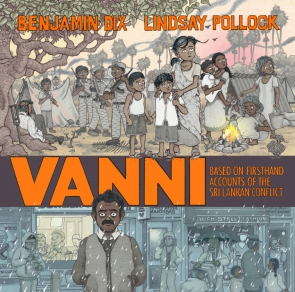 Vanni
Based on Firsthand Accounts of the Sri Lankan Conflict
Benjamin Dix
Lindsay Pollock
Vanni
Based on Firsthand Accounts of the Sri Lankan Conflict
Benjamin Dix
Lindsay Pollock
In the tradition of Maus, Palestine, and Persepolis, Vanni is a graphic novel documenting the human side of the conflict between the Sri Lankan government and the “Tamil Tigers.” Told from the perspective of a single family, it takes readers through the horrors and life-changing decisions individuals are forced to make when caught up in someone else’s war.
Set in the northern region of Sri Lanka, which was devastated by the civil war, this graphic novel follows the Ramachandran family as they flee their home after the 2004 tsunami and move from one displacement camp to the next, seeking an ever-elusive safe haven and struggling to keep each other alive. Inspired by Benjamin Dix’s experience working in Sri Lanka for the United Nations during the war, Vanni draws on more than four years of meticulous research, official reports, and first-hand interviews with refugees. Elegantly drawn by Lindsay Pollock, it depicts heroic acts of kindness and horrific acts of violence, memorializing the experiences of the Tamil civilians against the forces that seek to erase their memory.
 Nuking Alaska
Notes of an Atomic Fugitive
Peter Dunlap-Shohl
Nuking Alaska
Notes of an Atomic Fugitive
Peter Dunlap-Shohl
From the creator of the critically acclaimed graphic novel My Degeneration: A Journey Through Parkinson’s comes an unnervingly funny tale of life in Alaska during the tensest times of the Cold War.
Peter Dunlap-Shohl grew up on the front lines of the Cold War in the 1950s and ’60s, where Alaska residents lived in the shadow of a nuclear arsenal nine times the size of the Soviet Union’s. This graphic novel recounts the surprising and tragicomic details of the nuclear threats faced by Alaskans, including Project Chariot, championed by Edward Teller and his “firecracker boys” in the late 1950s and early ’60s; the nearly nuclear disaster caused by the Great Alaskan Earthquake of 1964; and the 1971 test of a nuclear warhead on the island of Amchitka. Dunlap-Shohl shares the terrible consequences that these events and others had for humans and animals alike, all in the service of “atoms for peace.”
Drawn with Dunlap-Shohl’s characteristic editorial cartooning style, Nuking Alaska is a fast-paced reminder of how close we came to total annihilation just a half century ago—and how terribly relevant the nuclear threat remains to this day.
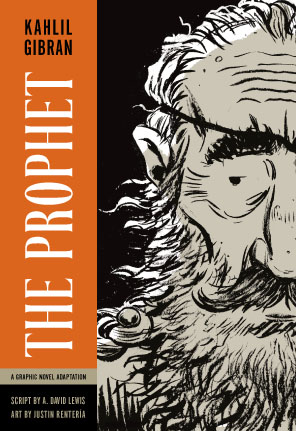 The Prophet
A Graphic Novel Adaptation
Kahlil Gibran
Justin Rentería
The Prophet
A Graphic Novel Adaptation
Kahlil Gibran
Justin Rentería
One of the best known and most translated works of free-verse poetry ever published in the English language, The Prophet, by Lebanon-born Kahlil Gibran, tells the story of the prophet Almustafa, who was banished from his homeland and who has lived the last twelve years of his life as a refugee among the good people of Orphalese. One day, as he prepares to board the ship that will take him home, Almustafa addresses a gathering of townspeople who have come to see him off. His parting words of wisdom about the human condition reveal him to be a man who sees deeply into the hearts, minds, and souls of his peers.
While remaining faithful to the original text, the script adaptation by A. David Lewis provides backstory details that provide greater insight into the enigmatic main character. And the illustrations by Justin Rentería, inspired by a 1920s Ottoman style, are vibrant, authentic, and skillfully paced. Appearing exactly one hundred years after the original 1923 publication of Gibran’s masterpiece, and at a time when entire groups of people are being forced to seek refuge elsewhere, this fresh and visually compelling rendering of The Prophet conveys the original work’s bracing and inspirational message about what it means to live well in today’s world.
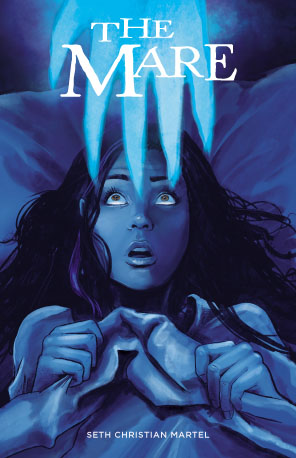 The Mare
Seth C. Martel
The Mare
Seth C. Martel
Everyone else may be enjoying the summer, but Indigo’s life isn’t going so well. Her dad’s marriage just ended in a very public divorce, and now he’s drinking again. Indy barely graduated from high school, she just lost her job, and she doesn’t know what to do with her life. The stress is causing her nightmarish sleep paralysis—or so she thinks.
Indy confides in her best friend, Kasia, who blames “The Mare” for her troubles—the spirit of someone wronged that saps its victim’s energy at night. It sounds crazy to Indy, but is it?
Steeped in the nostalgia of lazy summers and mixtapes, concert tickets and coffee, The Mare is a story about friends, family, and finding one’s way—with a touch of the supernatural and a powerful, surprising twist.
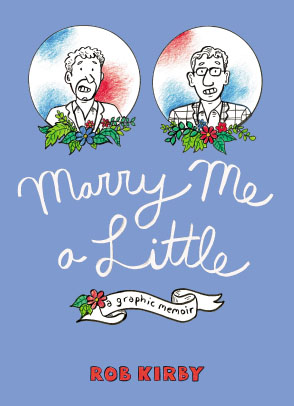 Marry Me a Little
A Graphic Memoir
Rob Kirby
Marry Me a Little
A Graphic Memoir
Rob Kirby
In Marry Me a Little, Rob Kirby recounts his experience of marrying his longtime partner, John, just after same-sex marriage was legalized in Minnesota in 2013, and two years before the Supreme Court decision in Obergefell v. Hodges made same-sex marriage the law of the land. This is a personal story—about Rob’s ambivalence (if not antipathy) toward the institution of marriage, his loving relationship with John, and the life that they share together—set against the historical and political backdrop of shifting attitudes toward LGBTQ+ rights and marriage. With humor, candor, and a near-whimsical drawing style, Rob relates how he and John navigated this changing landscape, how they planned and celebrated their wedding, and how the LGBTQ+ community is now facing the very real possibility of setbacks to marriage equality.
Heartwarming, honest, and slyly humorous, Marry Me a Little is a wonderfully illustrated celebration of a romantic partnership between two men and a personal account of a momentous and historic moment in the fight for gay rights.
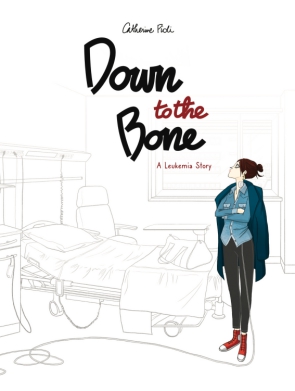 Down to the Bone
A Leukemia Story
Catherine Pioli
Down to the Bone
A Leukemia Story
Catherine Pioli
When Catherine is diagnosed with acute leukemia, a deadly form of cancer that attacks the immune system, her life is turned upside down. Young and previously healthy, she now finds herself catapulted into the world of the seriously ill—constantly testing and waiting for results, undergoing endless medical treatments, learning to accept a changing body, communicating with a medical team, and relying on the support of her partner, family, and friends.
A professional illustrator, Catherine decides to tell the story of her disease in this graphic novel, and she does so with great sincerity, humor, and rare lucidity. We accompany her through the waiting, the doubts, the fears, and the tears—but also the laughter, the love, and the strong will to live.
Rich in emotion, lighthearted, and profound, Down to the Bone is a powerful book.
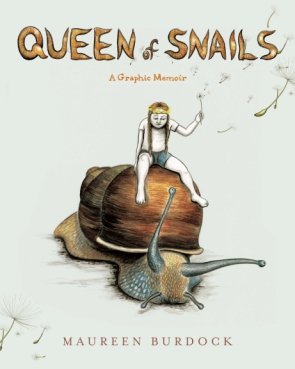 Queen of Snails
A Graphic Memoir
Maureen Burdock
Queen of Snails
A Graphic Memoir
Maureen Burdock
Uprooted from her childhood in Germany and set adrift in the American Midwest, Maureen was raised by a kind but neglectful mother who loved Jesus more than her own child and a stern, disinterested grandmother who waxed nostalgic about Nazi Germany. Growing up queer and isolated, Maureen often felt unmoored and unloved.
Years later, Maureen reflects upon her complicated past. Queen of Snails follows Maureen through time and memory in her quest to untangle the trauma passed down to her over three generations of women. Part memoir and part family history, Queen of Snails is a beautifully drawn, powerful story that examines and transmutes the emotional baggage of violence, abandonment, and displacement.
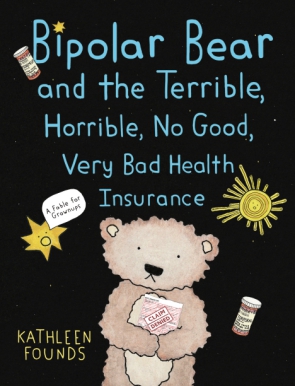 Bipolar Bear and the Terrible, Horrible, No Good, Very Bad Health Insurance
A Fable for Grownups
Kathleen Founds
Bipolar Bear and the Terrible, Horrible, No Good, Very Bad Health Insurance
A Fable for Grownups
Kathleen Founds
Theodore is a bear with wild mood swings. When he is up, he carves epic poetry into tree trunks. When he is down, he paints sad faces on rocks and turtle shells. In search of prescription medications that will bring stability to his life, Theodore finds a job with health insurance benefits. He gets the meds, but when he can’t pay the psychiatrist’s bill, he becomes lost in the Labyrinth of Health Insurance Claims.
This witty and colorful tale follows the comical exploits of Theodore, a loveable and relatable bear, as he copes with bipolar disorder, navigates the inequities of capitalist society, founds a commune, and becomes an activist, all the while accompanied by a memorable cast of characters—fat-cat insurance CEOs, a wrongfully convicted snake, raccoons with tommy guns, and an unemployed old dog who cannot learn new tricks.
Entertaining, whimsical, and bitingly satirical, Bipolar Bear is a fable for grownups that manages the delicate balance of addressing society’s ills while simultaneously presenting a hopeful vision for the world.
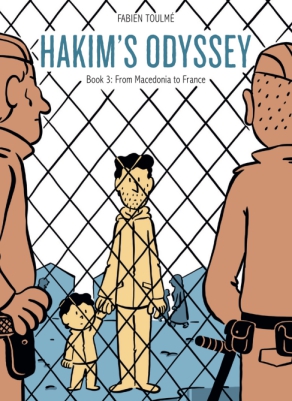 Hakim’s Odyssey
Book 3: From Macedonia to France
Fabien Toulmé
Hakim’s Odyssey
Book 3: From Macedonia to France
Fabien Toulmé
—I’m Syrian, and I got here from Turkey.
—Whoaaa! That’s a hell of a trip!
—You could say that . . . I left home almost three years ago.
After being rescued from the Mediterranean, Hakim and his son reach European soil, full of hope. But before they can get to France, they face a new series of challenges: overcrowded detention centers, run-ins with border police, and a persistent xenophobia that seems to follow them almost everywhere they go. Will Hakim’s determination and the kindness of strangers be enough to carry him to the end of his journey and reunite his family?
By turns heart-warming and heart-wrenching, this final installment in the Hakim’s Odyssey trilogy follows Hakim and his son as they make their way from Macedonia to the south of France. Based on true events, it lays bare the tremendous effects that the policies of wealthy countries and the attitudes of their people have on the lives of the displaced and dispossessed.
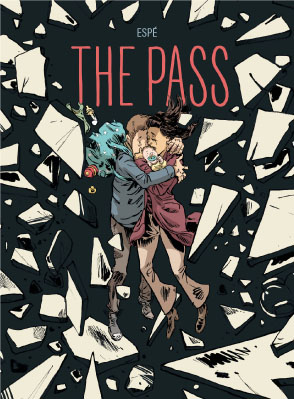 The Pass
Espé
The Pass
Espé
Camille and Bastien are overjoyed at the birth of their second child. But their happiness is short-lived. Soon after Louis is born, he is diagnosed with severe heart defects. Because of his young age, he must wait for surgery—and the operation itself could prove fatal.
During the tense and bewildering months that follow Louis’s diagnosis, his parents find some comfort in Camille’s father, Pablo, who comes to help care for the children. The long wait turns into a joyful interlude of games, tenderness, and deepening love between Louis and Pablo, an experience that will remain forever engraved in their lives.
Inspired by real events, this emotionally engaging follow-up to Espé’s The Parakeet continues the story of Bastien, now a father, as he and Camille cope with every parent’s biggest fear: that they could lose their child.
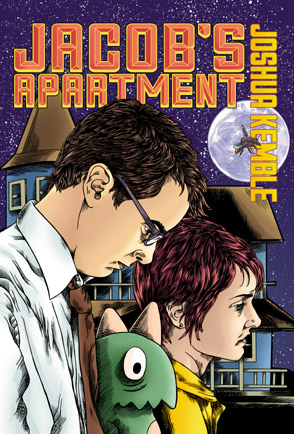 Jacob’s Apartment
Joshua Kemble
Jacob’s Apartment
Joshua Kemble
At first glance, college roommates Jacob and Sarah seem like polar opposites. Jacob is a Christian; Sarah is an atheist. Sarah is a drinker, and Jacob, a teetotaler. But they have been friends for years, finding commonality in their shared dream to create art.
Jacob’s world is turned upside down when his father dies, causing him to question his faith. Meanwhile, Sarah wrestles with her own demons, searching for solace in one-night stands after her boyfriend (and professor) leaves her for a job in New York.
A coming-of-age graphic novel in the vein of Ghost World and Fun Home, Jacob’s Apartment weaves together the threads of spiritual faith, identity, purpose, love, and loss to create an engrossing world in which waking and sleeping dreams collide.
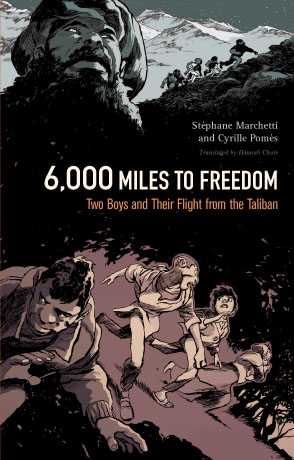 6,000 Miles to Freedom
Two Boys and Their Flight from the Taliban
Stéphane Marchetti
Cyrille Pomès
6,000 Miles to Freedom
Two Boys and Their Flight from the Taliban
Stéphane Marchetti
Cyrille Pomès
Twelve-year-old Adel and his cousin Shafi try to lead a normal childhood in war-torn Afghanistan. But when Adel’s father dies, everything changes. His uncle, a religious fundamentalist, sends Adel to study at a madrasa run by militants, where he is trained as an insurgent and chosen to carry out a suicide bombing. When his moment of martyrdom arrives, Adel’s detonator fails, and he is forced to flee the country or risk being killed by the Afghan police or the Taliban themselves.
Together, Adel and Shafi set out to seek refuge in England, where Shafi’s brother now lives and where a new life awaits. With that hope, the two boys begin the perilous journey of 6,000 miles to freedom, crossing mountains on foot and squeezing into crowded trucks with other refugees. The two become separated only to find each other again in the Calais Jungle encampment, their last, hellish stop.
Based on numerous testimonies from refugee youth, this poignant, timely, and well-documented story brings to life the traumatic experiences faced by Afghani children fleeing war and poverty, as well as the isolation they often feel as refugees in the West.
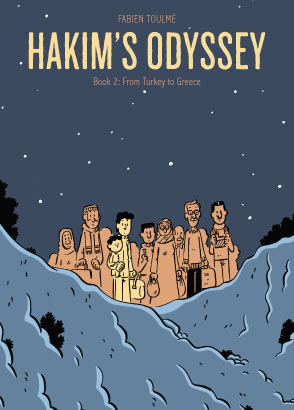 Hakim’s Odyssey
Book 2: From Turkey to Greece
Fabien Toulmé
Hakim’s Odyssey
Book 2: From Turkey to Greece
Fabien Toulmé
“You know, Haidi, we’re going on a trip. A really big trip to find our way to Mama.”
In exile and far from his homeland, Hakim finds a bit of hope in the birth of his son. But between unstable jobs and selling what he can in the streets, it’s hard to survive—and impossible for the family to stay together. Reluctantly separated from the woman he loves and alone with his child, Hakim will have to overcome incredible odds and seemingly impossible obstacles to reunite his family, which leads him to make the most difficult decision of his life.
Captivating and deeply moving, this second book of the critically acclaimed Hakim’s Odyssey follows the true story of a Syrian refugee as he tries to find his way in Turkey and then makes the perilous trek to what he hopes will be a more settled life in Europe.
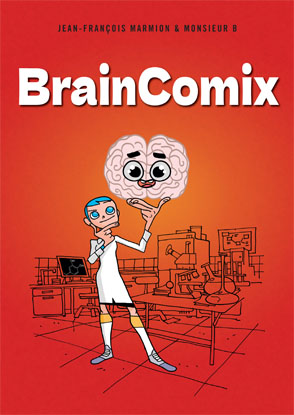 BrainComix
Jean-François Marmion
Monsieur B
BrainComix
Jean-François Marmion
Monsieur B
Sure, he’s ugly—but such talent!
The human brain is the most complex structure in the universe. It’s as awe-inspiring as it is intimidating, when you’re not an expert. So how can we get to know the brain? By asking him to introduce himself, of course!
In BrainComix, the brain is the star of the show—hamming it up in a televised interview conducted by the intrepid journalist Julia Mojito. Without jargon, and with plenty of humor, we come to understand how this spongy, bloody organ acts as our guardian angel, filters our perceptions, and shapes the stories we tell about the world and about ourselves.
Test your brain with BrainComix!
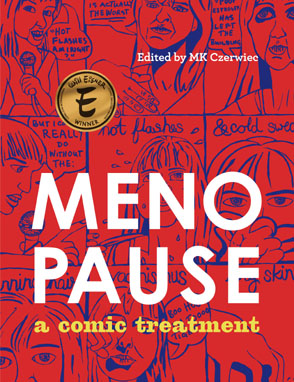 Menopause
A Comic Treatment
MK Czerwiec
Menopause
A Comic Treatment
MK Czerwiec
Hot flashes. Vaginal atrophy. Social stigma. The comics in this unapologetic anthology prove that when it comes to menopause and its attendant symptoms, no one needs to sweat it alone.
Featuring works by comics luminaries such as Lynda Barry, Joyce Farmer, Ellen Forney, and Carol Tyler, Menopause is the perfect antidote to the simplistic, cheap-joke approach that treats menopause as a cultural taboo. This anthology challenges stereotypes with perspectives from a range of life experiences, ages, gender identities, ethnicities, and health conditions.
Other contributors include Maureen Burdock, Jennifer Camper, KC Councilor, MK Czerwiec, Leslie Ewing, Ann M. Fox, Keet Geniza, Roberta Gregory, Teva Harrison, Rachael House, Leah Jones, Monica Lalanda, Cathy Leamy, Ajuan Mance, Jessica Moran, Mimi Pond, Sharon Rosenzweig, Joyce Schachter, Susan Merrill Squier, Emily Steinberg, Nicola Streeten, A. K. Summers, Kimiko Tobimatsu, Shelley L. Wall, and Dana Walrath.
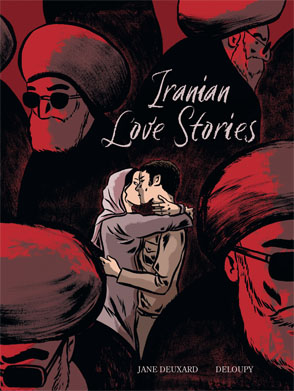 Iranian Love Stories
Jane Deuxard
Deloupy
Iranian Love Stories
Jane Deuxard
Deloupy
Gila, 26, was at a party when the police showed up. The men were able to get away with bribes, but the women were taken to the station, and anyone who’d been drinking was forced to submit to a virginity test. She never went to another party after that.
Zeinab is 20 and she loves being a woman in Iran. She says that she feels like a queen! And despite all the risks, she confesses that she makes love with her boyfriend because the danger excites her.
Vahid is 26. He was a leader with the Green Movement. Then he watched his friend Neda die right in front of him. Now he keeps his head down, trying to finish his studies.
In a series of vignettes based on clandestine interviews, this award-winning graphic novel explores the politics and love lives of ten young Iranian men and women from diverse backgrounds. The result is an honest portrait of Iranian youth today and a rare glimpse into a society where the sexes are strictly segregated—and Western journalists aren’t welcome. Through testimonies from across the country, we learn about traditional marriages, the pressures of living under the regime, and how young people escape the police and defy tradition to live their love stories.
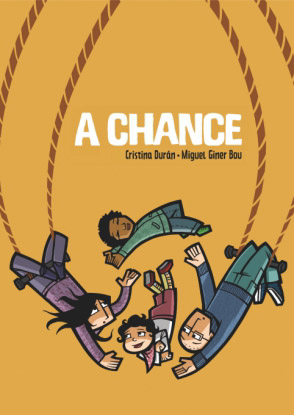 A Chance
Cristina Durán
Miguel Giner Bou
A Chance
Cristina Durán
Miguel Giner Bou
For Cris and Miguel, creating a family will take a little luck and lots of determination. A Chance is the engrossing, heartwarming story of their struggles and triumphs.
The narrative follows Cristina Durán and Miguel Giner Bou as they rebuild and reinvent themselves after their daughter Laia is born with cerebral palsy. Hospitals, rehabilitation centers, and doctors become part of their daily routine. There is one chance in a thousand that Laia will pull through—and they hold on to that chance with tremendous strength and indomitable joy.
Years later, with the same courage and determination, Cristina and Miguel embark on the arduous process of adopting their second daughter, Selam, from Ethiopia. This time, they face a long period of training, psychological tests, interviews, and formalities before they can even pack their bags. And when they return with Selam, the challenge of reinvention awaits them yet again.
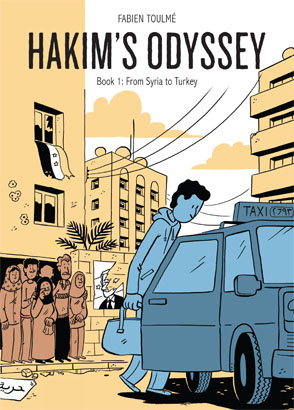 Hakim’s Odyssey
Book 1: From Syria to Turkey
Fabien Toulmé
Hakim’s Odyssey
Book 1: From Syria to Turkey
Fabien Toulmé
What does it mean to be a “refugee”? It is easy for those who live in relative freedom to ignore or even to villainize people who have been forced to flee their homes. After all, it can be hard to identify with others’ experiences when you haven’t been in their shoes.
In Hakim’s Odyssey, we see firsthand how war can make anyone a refugee. Hakim, a successful young Syrian who had his whole life ahead of him, tells his story: how war forced him to leave everything behind, including his family, his friends, his home, and his business. After the Syrian uprising in 2011, Hakim was arrested and tortured, his town was bombed, his business was seized by the army, and members of his family were arrested or disappeared. This first leg of his odyssey follows Hakim as he travels from Syria to Lebanon, Lebanon to Jordan, and Jordan to Turkey, where he struggles to earn a living and dreams of one day returning to his home.
This graphic novel is necessary reading for our time. Alternately hopeful and heartbreaking, Hakim’s Odyssey is a story about what it means to be human in a world that sometimes fails to be humane.
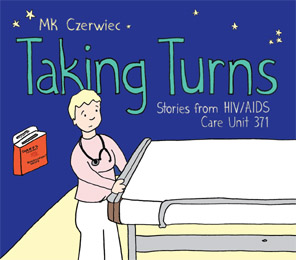 Taking Turns
Stories from HIV/AIDS Care Unit 371
MK Czerwiec
Taking Turns
Stories from HIV/AIDS Care Unit 371
MK Czerwiec
Fear of contagion, isolated patients, a surge of overwhelming and unpreventable deaths, and the frontline healthcare workers who shouldered the responsibility of seeing us through a deadly epidemic: as we continue to confront the global pandemic caused by COVID-19, Taking Turns reminds us that we’ve been through this before. Only a few decades ago, the world faced another terrifying and deadly health crisis: HIV/AIDS.
Nurse MK Czerwiec began working at the Illinois Masonic Medical Center’s HIV/AIDS Care Unit 371 in the 1990s—a pivotal time in the history of AIDS. Deaths from the disease in the United States peaked in 1995 and then dropped drastically in the following years, with the release of effective drug treatments. In this graphic memoir, Czerwiec provides an insider’s view of the lives of healthcare workers, patients, and loved ones from Unit 371. With humor, insight, and emotion, MK shows how the patients and staff cared for one another, how the sick faced their deaths, and how the survivors looked for hope in what seemed, at times, like a hopeless situation.
Drawn in a restrained, inviting style, Taking Turns is an open, honest look at suffering, grief, and resilience among a community of medical professionals and patients at the heart of the AIDS epidemic.
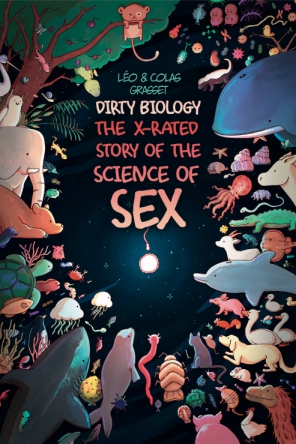 Dirty Biology
The X-Rated Story of the Science of Sex
Léo Grasset
Colas Grasset
Dirty Biology
The X-Rated Story of the Science of Sex
Léo Grasset
Colas Grasset
What is sex? Has it always existed? What purpose does it serve? Why are there penises and vaginas? These questions are at the very core of Dirty Biology, an erudite (and hilarious) graphic novel that aims to teach you everything you wanted to know about sex—and then some.
“Sex” can mean a number of things. It can refer to sex organs, to sex types, to the act of copulation, or to the simple exchange of genetic material. This book explains what we actually mean when we talk about sex and reveals a wealth of astonishing scientific details along the way. For example, did you know that some species can have sex without genitals? And when it comes to genitals, did you know that there’s an amazing diversity of these across species? From the evolution of penises and vaginas to far-fetched mating rituals and the shocking consequences of the sex act, Dirty Biology exposes sex for what it is: a lot more interesting and more complicated than the simplistic image we often have of it.
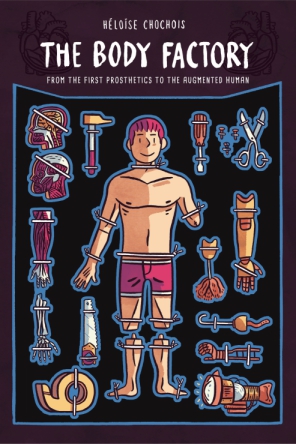 The Body Factory
From the First Prosthetics to the Augmented Human
Héloïse Chochois
The Body Factory
From the First Prosthetics to the Augmented Human
Héloïse Chochois
A young man has a horrible motorcycle accident. He wakes up in the hospital to discover that one of his arms has been amputated. Then a portrait on the wall of his hospital room begins to speak to him. The subject of the painting introduces himself as Ambroise Paré, the French barber-surgeon who revolutionized the art of amputation. From this wonderfully absurd premise, the two begin an imaginary conversation that takes them through a sweeping history of surgical amputation, from the Stone Age to the Space Age. Unencumbered by pathos or didacticism, this graphic novel explores the world of amputation, revealing fascinating details about famous amputees throughout history, the invention of the tourniquet, phantom limb syndrome, types of prostheses, and transhumanist technologies.
Playfully illustrated and seriously funny, The Body Factory is sure to delight anyone interested in the history and future of medicine and how we repair—and even enhance—the body.
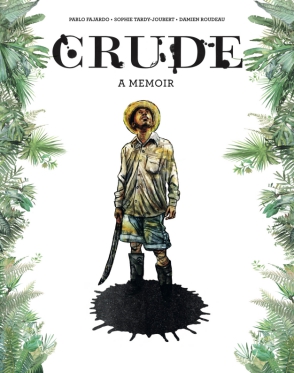 Crude
A Memoir
Pablo Fajardo
Sophie Tardy-Joubert
Damien Roudeau
Crude
A Memoir
Pablo Fajardo
Sophie Tardy-Joubert
Damien Roudeau
Oil waste was everywhere—on the roads, in the rivers where they fished, and in the water that they used for bathing, cooking, and washing. Children became sick and died, cases of stomach cancer skyrocketed, and women miscarried or gave birth to children with congenital disorders. The American oil company Texaco—now part of Chevron—extracted its first barrel of crude oil from Amazonian Ecuador in 1972. It left behind millions of gallons of spilled oil and more than eighteen million gallons of toxic waste.
In Crude, Ecuadorian lawyer and activist Pablo Fajardo gives a firsthand account of Texaco’s involvement in the Amazon as well as the ensuing legal battles between the oil company, the Ecuadorian government, and the region’s inhabitants. As a teenager, Fajardo worked in the Amazonian oil fields, where he witnessed the consequences of Texaco/Chevron’s indifference to the environment and to the inhabitants of the Amazon. Fajardo mobilized with his peers to seek reparations and in time became the lead counsel for UDAPT (Union of People Affected by Texaco), a group of more than thirty thousand small farmers and indigenous people from the northern Ecuadorian Amazon who continue to fight for reparations and remediation to this day.
Eye-opening and galvanizing, Crude brings to light one of the least well-known but most important cases of environmental and racial injustice of our time.
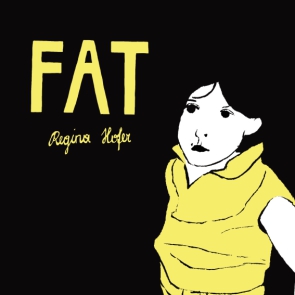 Fat
Regina Hofer
Fat
Regina Hofer
At sixteen, Regina began cutting back on meals to the point where her hair started to fall out. Later, she began to binge at night while her family slept. For a long time, she was able to keep her eating disorder a secret, though hiding her problem didn’t stop it from harming her emotional and physical well-being. The pressures of wanting to succeed as an artist led her to a nervous breakdown and, finally, a strong desire to start from scratch.
In Fat, Austrian-born author and artist Regina Hofer documents her battle with anorexia and bulimia. This powerful and imaginative graphic novel follows Regina from her childhood home in Upper Austria, where food and family mealtimes were often associated with feelings of personal failure, to art school at the Mozarteum University Salzburg and a violent reckoning with her dysfunctional family.
Vivid and courageous, this memoir will resonate with anyone living through or seeking to understand what it is like to live with an eating disorder.
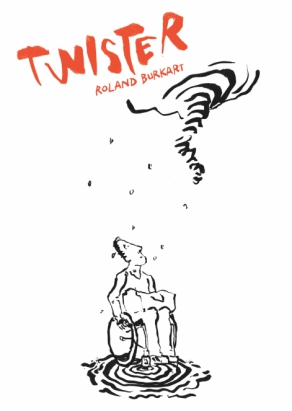 Twister
Roland Burkart
Twister
Roland Burkart
The last thing Piedro remembers is diving into the lake on his day off from work. Now he lies in a hospital bed with a wheelchair at his side. Casting a shadow from the doorway, his caretaker remarks on “how quickly one gets used to this kind of thing,” as she goes on to empty his catheter bag and to help him into his wheelchair.
Piedro must now deal with a growing mix of fear and powerlessness that surges within him as he realizes that he will be paralyzed forever; it bursts forth like a twister, “over and over again,” until he resigns himself to it. In time, Piedro’s feelings of hopelessness are offset by the realization that he can find both love and a degree of independence. With the support of his family and friends, he makes his way through rehab and finally gets back to the business of living.
Based on his own experiences, Roland Burkart’s Twister is a realistic and uplifting narrative that will resonate with anyone who has ever experienced or borne witness to a life upended by calamity.
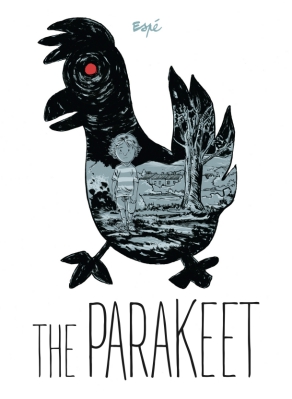 The Parakeet
Espé
The Parakeet
Espé
Bastien is eight years old, and his mother is ill. She often has what his father and grandparents call “episodes.” She screams and fights, scratches and spits, and has to be carted away to specialized clinics for frequent treatments. Bastien doesn’t like it when she goes, because when she comes home, she isn’t the same. She has no feelings, no desires, and not much interest in him. According to the doctors, Bastien’s mother suffers from “bipolar disorder with schizophrenic tendencies,” but he prefers to imagine her as a comic-book heroine, like Jean Grey, who may become Dark Phoenix and explode in a superhuman fury at any moment.
Based on the creator’s own childhood experiences, The Parakeet is the story of a boy whose only refuge from life’s harsh realities lies in his imagination. In his eyes, we see the confusion and heartache he feels as he watches his mother’s illness worsen and the treatments fail. Through his eyes, we see how mental illness can both tear families apart and reaffirm the bonds of love. Poignant yet playful, The Parakeet follows Bastien’s struggle to accept the mother he has while wishing for the mother he needs.
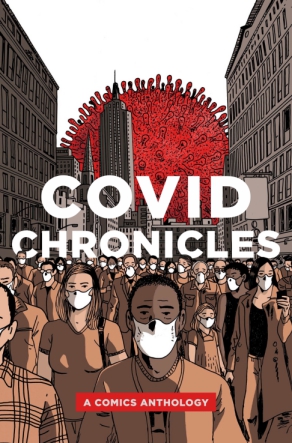 COVID Chronicles
A Comics Anthology
Kendra Boileau
Rich Johnson
COVID Chronicles
A Comics Anthology
Kendra Boileau
Rich Johnson
In 2020, the COVID-19 pandemic brought the world to its knees. When we weren’t sheltering in place, we were advised to wear masks, wash our hands, and practice social distancing. We watched in horror as medical personnel worked around the clock to care for the sick and dying. Businesses were shuttered, travel stopped, workers were furloughed, and markets dropped. And people continued to die.
Amid all this uncertainty, writers and artists from around the world continued to create comics, commenting directly on how individuals, societies, governments, and markets reacted to the worldwide crisis. COVID Chronicles: A Comics Anthology collects more than sixty such short comics from a diverse set of creators, including indie powerhouses, mainstream artists, Ignatz and Eisner Award winners, and media cartoonists. In narrative styles ranging from realistic to fantastic, they tell stories about adjusting to working from home, homeschooling their kids, missing birthdays and weddings, and being afraid just to leave the house. They probe the failures of government leaders and the social safety net. They dig into the racial bias and systemic inequities that this pandemic helped bring to light. We see what it’s like to get the virus and live to tell about it, or to stand by helplessly as a loved one passes.
At times heartbreaking and at others hopeful and humorous, these comics express the anger, anxiety, fear, and bewilderment we feel in the era of COVID-19. Above all, they highlight the power of art and community to help us make sense of a world in crisis, reminding us that we are truly all in this together.
The comics in this collection have been generously donated by their creators. A portion of the proceeds from the sale of this volume are being donated by the publisher to the Book Industry Charitable Foundation (Binc) in support of comics shops, bookstores, and their employees who have been adversely affected by the pandemic.
